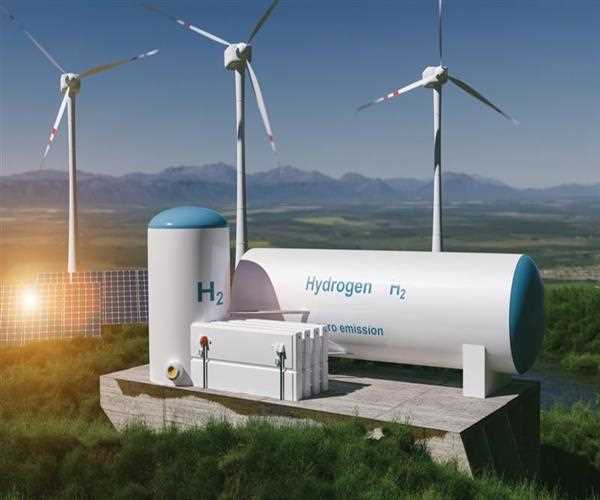Search here

08-Feb-2023
Is green hydrogen future for India
After China and the United States, India is the third-largest emitter of greenhouse gases on the planet. The government of India is placing renewable energy and a new fuel known as "green hydrogen" at the top of its priority list in an effort to decarbonize the country's economy.
Hydrogen is the newest buzzword around the world for supplying additional energy. It can be produced from a variety of resources, including natural gas, biomass, and renewable power sources like solar and wind, making it the cleanest form of energy. It can be put to use in cars, homes, as portable power, and many other places.
Green hydrogen is made by electrolysis of water using renewable energy like solar or wind. It can replace fuels like gasoline and diesel that produce carbon emissions and help the United Nations reach its Sustainable goals. Companies from both the public and private sectors provide thrust. In Leh, Ladakh, for instance, National Thermal Power Corporation is working toward the establishment of India's first green hydrogen fueling station.
The ongoing conflict between Russia and Ukraine exacerbated uncertainty in international energy markets. India imports 55% of its natural gas and 85 percent of its oil, so energy security is very important.
However, the widespread use of fossil fuels is deteriorating the environment, wreaking havoc on our lives, and contributing to climate change, which results in unprecedented rainfall, hurricanes, landslides, and glacier melting. Alternatives in the form of renewable energy are actively sought in this troubling scenario. A new contender has emerged in recent times.
Green hydrogen is the name of it. At the moment, all of India's hydrogen consumption comes from fossil fuels. However, it is anticipated that electrolysis and renewable electricity will produce three-quarters of all hydrogen by 2050.
Water is split through electrolysis during the manufacturing process. It is distinct from "grey" hydrogen, which is made from methane and emits greenhouse gases into the atmosphere. On the other hand, "blue" hydrogen, on the other hand, captures these emissions and stores them underground to keep them from causing climate change.
Green hydrogen, according to Goldman Sachs, has the potential to meet up to 25% of the world's energy needs by 2050 and become an addressable market worth $10 trillion by that time. Green hydrogen is a more environmentally friendly and emission-free fuel than electric vehicles and must be scaled up in order to achieve net zero emissions by 2050 and limit global temperature rises to 1.5 degrees Celsius. Compared to EVs, green hydrogen-powered vehicles can be charged more quickly.
In addition, green hydrogen is a cleaner alternative for automobile fuel because its generation process only makes use of renewable resources, whereas a significant amount of electricity is still produced using fossil fuels.
India's future goals:
A recent report from The Energy and Resources Institute highlighted the potential of green hydrogen in India. It anticipates that 80 percent of India's hydrogen will be "green" by 2050. By 2030, hydrogen produced from renewable sources would begin to compete with hydrogen produced from fossil fuels because its mid-term cost would decrease by more than 50%.
By 2030, the government wants to have 450 GW of renewable capacity. The goal of making the country more environmentally friendly poses a significant obstacle: India is the third-largest emitter of greenhouse gases on the planet, trailing only China and the United States.
A landscape in transition: Indian Oil and Greenstat Hydrogen India, a subsidiary of Norwegian energy company Greenstat, signed a statement of intent in February to establish a Center of Excellence on Hydrogen to promote R&D projects in Green and Blue Hydrogen between Norwegian and Indian R&D institutions/universities. Through a $500 million joint venture, the Greenko Group and John Cockerill of Belgium intend to establish a 2 GW electrolyzer factory in India. Around 8% of India's annual imports of liquified natural gas (LNG) could be replaced by this facility.
The IEA's World Energy Outlook 2020 predicts that global investment in battery storage will rise sixfold to $25 billion by 2030, making it a significant contributor to power system flexibility.

SEO and Content Writer
I am Drishan vig. I used to write blogs, articles, and stories in a way that entices the audience. I assure you that consistency, style, and tone must be met while writing the content. Working with the clients like bfc, varthana, ITC hotels, indusind, mumpa, mollydolly etc. has made me realized that writing content is not enough but doing seo is the first thing for it.
Join Our Newsletter
Subscribe to our newsletter to receive emails about new views posts, releases and updates.
Copyright 2010 - 2025 MindStick Software Pvt. Ltd. All Rights Reserved Privacy Policy | Terms & Conditions | Cookie Policy